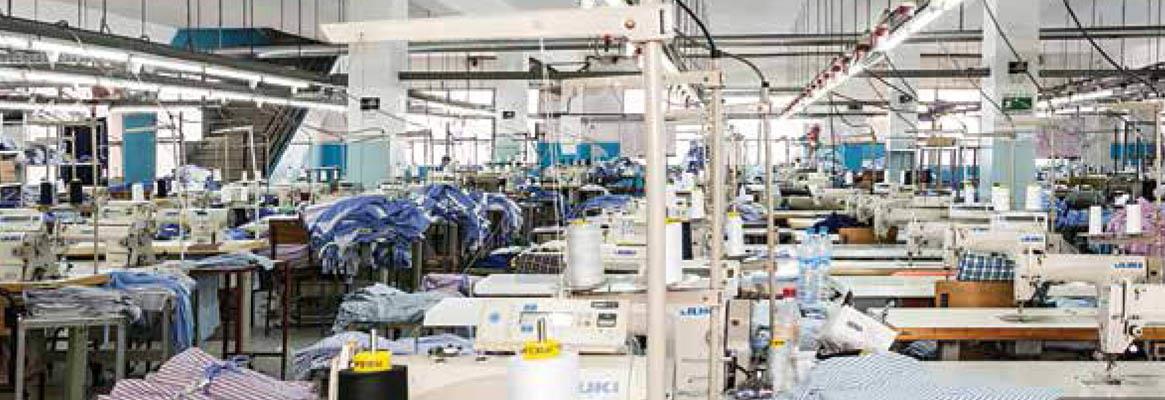Apparel manufacturing is a complex business, and to excel in this business as anywhere else one needs to avoid making certain cardinal mistakes.
The global apparel market was estimated at $1,800 billion in 2017, with India's contribution being about $67 billion-roughly 4 per cent of the global apparel market. India's apparel market has grown at a CAGR (compounded annual growth rate) of 10 per cent in the past decade and is expected to grow at a still faster pace of 12 per cent in the next decade. The industry is passing through an important phase. On the one hand, changing consumer trends and growing disposable incomes are leading to a high demand and shift from tailor-made to readymade clothing. On the other, Central and state governments' incentives for apparel manufacturing are making investments a lucrative proposition.
In spite of a favourable ecosystem, apparel manufacturing is one of the most complex businesses to run. It involves simultaneous functioning of multiple factors to make it a profitable business. Even small gaps in the supply chain can lead to a delay in shipment and result in serious losses to a company. It also involves cut-throat competition against cost-competitive countries such as Ethiopia, Bangladesh, etc. Hence, the operations of an apparel factory require a pre-emptive approach towards early identification and rectification of the problems and delays.
Sure, prevention is better than cure. But how?
Even with stiff competition, there are ways to excel a business. One such approach is to avoid making common mistakes which can seriously hamper a company's profitability. This article details the seven most common mistakes that an apparel investor makes.
1. Flawed factory design and machinery layout
Creating a factory layout is one of the most critical parts in the setting up an apparel manufacturing unit. The layout is not just a representation of the shop floor in terms of infrastructure and machinery, but is also important for planning of material and manpower movement. With the ever-changing orders and requirements of buyers, manufacturers resort to changing line sizes, machines and material movement to suit the product being manufactured.
The development of an efficient plant layout results in a smooth workflow across production process, improved production efficiency and ensures 10-12 per cent space saving. A well-developed layout also incorporates international compliance requirements such as safety, health and environment (SHE) norms and is a visually appealing factory.
2. Ignorance of industrial engineering, quality control methods
The primary benefit of modern industrial engineering (IE) lies in making work as easy as possible while keeping overall cost factors to a minimum. Once the work is simplified for workers, it has a domino effect on the entire organisation. Workers may be able to do more work in the same time as they did without the application of IE, thus increasing the overall productivity of work.
In addition to the modern IE, the presence of an efficient quality control (QC) system is necessary to maximise results. It is a continuous process that touches everything from purchasing to manufacturing to distribution, and requires attention at all the processes in the value chain to meet product standards. An absence of a decent QC system and IE can lead to inconsistent production and a fall in productivity.
3. Over / under-investment in technology
 The machinery used for apparel production usually has a long shelf life and requires minimal maintenance when compared to other manufacturing industries. This makes selection of correct machines a really important task as improper machinery selection can lead to over-investment and product quality issues.
The machinery used for apparel production usually has a long shelf life and requires minimal maintenance when compared to other manufacturing industries. This makes selection of correct machines a really important task as improper machinery selection can lead to over-investment and product quality issues.
The machinery involved in apparel manufacturing till the late 20th century was not complex in nature as there were limited technologies. However, the turn of the last century has seen emergence of a large number of machinery manufacturers and various updated technologies. The industry has been introduced to various automates such as auto-cutting, 3-D modelling & pattern-making, automatic sewing machines, advanced material handling systems, etc. These technologies make manufacturing an easy and more systematic process. However, an advanced technology may not be the best-suited for all products due to the high cost as the addition of low cost work aids can help achieve the same productivity levels. Also, the costs associated with most of these technologies is generally high, leading to over or under-investment in technology.
4. Wrong hiring, poor training and overstaffing
Apparel manufacturing requires extensive workforce involvement, and this makes the segment highly reliant on the performance of the staff and workers. Moreover, in the assembly line nature of the modern production systems, a shortage in the efforts of a single worker can lead to a fall in overall productivity. As workers are directly involved in processes and add value to products, the skill gap of workers is an important issue that needs to be addressed.
The training of workers should not only be seen in isolation as a boost to productivity, but it also helps in developing a right work culture in line with a longterm vision. As a result, companies are benefited by lower absenteeism, lower labour turnover, higher production levels, and a more motivated staff and workers.
Another issue with apparel manufacturers in India is overstaffing due to the low individual efficiencies. Although the wages for skilled workers are higher than un-skilled workers, the difference made through their efficiencies are higher than the money invested in hiring them. However, there is a lack of abundant workforce skilled for apparel production. To tackle this issue, the Indian government and several state governments have launched initiatives to increase the skill levels of the youth in the country. To support the initiatives, manufacturers should also impart training to their workforce for skill upgradation. Apparel manufacturing involves skills that require only a few weeks to acquire. Added to this, on-the-job training further shortens the length of the training required.
5. Excessive working capital due to poor planning
Apparel manufacturing, across the supply chain, involves various external input factors which may not be under the control of the manufacturer. These include fabrics, embroidery, labels, buttons, packaging material, etc. A delay in even one of these input factors can result in an overall delay in production and lead to a cascading effect across the manufacturing chain. With all inputs being exposed to unforeseeable delays and defects, manufacturers need to maintain a certain level of inventory. In such a scenario, any shortcoming in planning results in excessive inventory and- thus-high working capital, escalating the entire manufacturing cost.
With the concept of on time in full (OTIF), manufacturers need to invest in planning of the entire production value chain. This could include inventory management and ERP (enterprise resource planning) software or simple planning tools like time and action calendar. This will assist in timely shipments and, thus, controlled inventory levels.
6. Absence of information capture and communication
Apparel manufacturing involves co-working of various factors and, hence, requires a system for continuous coordination between the different departments in the organisation. It becomes necessary for companies to have a communication system in place to inform and update the various entities across the process flow regarding any delays or changes. Implementing a production control / ERP / MIS (management information system) / project management (PM) solution in the company helps in easy communication and early detection of such delays.
In the apparel manufacturing industry, recorded information is not necessarily structured, and the flow of information is often delayed due to physical movement of data through files and folders. This results in gaps in the information flow which in turn results in delayed shipments. For example, if the fabric procurement manager does not communicate a delay in fabric delivery to the cutting manager, the cutting manager would continue with the existing production plan. However, as the fabric has not been received as per the planned time, it would lead to increase in the idle time of the cutting floor and eventually a delay in the subsequent processes.
7. Absence or under-utilisation of the right software
Today, information technology is an integral part of the apparel industry. The data collected on a shop floor can be fully utilised only if analysed properly to arrive at strategy-defining results. Modern software provide manufacturers with the ability to monitor and control almost all aspects of their business from anywhere in the world. Some of these include radio frequency identification (RFID), smart operating solution (smart ops), and point of sale (POS), etc. However, most apparel manufacturers either do not have these IT tools or have them under-utilised because of poor implementation or wrong selection of systems. This under-utilisation is due to the lack of proper assessment of the requirement of such solutions available in the market. The manufacturers need to identify the need for these software and try to embed them into their production systems for maximising their profits.










Comments